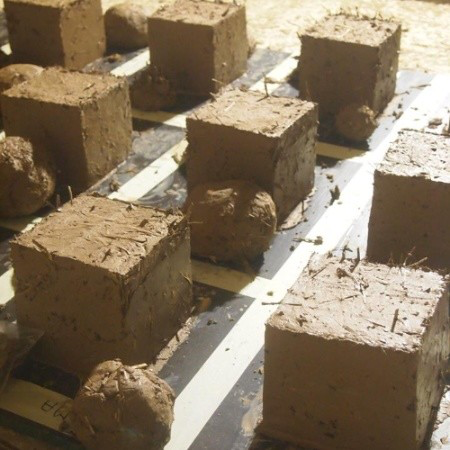
GBE E72 Cob Wall Systems Checklist
GBE > Encyclopaedia > Code > Checklist > G#40387
About:
Index:
E72 Cob Walls
0 Classification:
CI/SfB:
- Facilities:
- 7 Educational, Scientific, Information facilities,
- 72 Universities, colleges, other education facilities,
- 8 Residential Facilities;
- 81 Housing,
- 82 One-off housing units, houses
- (many others possible)
- Elements:
- (2-) Structure, Primary Elements, Carcass
- (21) External Vertical division
- (21) Walls, External Walls
- (41) Wall finishes external
- (42) Wall finishes, internal
- Construction forms:
- E Cast insitu work,
- H Section work,
- J Wire work, Mesh work;
- P Thick coating work;
- Materials:
- g Claywork (Dried, Fired),
- g1 Dried Clay e.g.: Adobe, cob, pisc de terra;
- j vegetable or animal materials,
- j3 Vegetable fibres other than wood eg: grasses (bamboo. eelgrass. seagrass, reeds, rushes, straw, strawboard); stem fibres (hemp, jute, flax, linen, flaxboard, hessian); leaf fibres (sisal); seed hairs (cotton, coir)
- y Composite materials;
CAWS: None
CAWS 2012: None
NGS CAWS+: E72 Cob Walls
CSI: None
Uniclass 1: 1997: None,
Uniclass 2: 2012:
- 25 Wall & Barrier Systems;
- 25 00 Monolithic wall systems;
- 25 00 10 Cob wall systems
Uniclass 2: 2013: Systems Ss_25_11_13 Cob Wall Systems
NBS Uniclass+Clause tagging List 2017: None
Uniclass 3: 2015: (No NBS clauses) (consider an NGS Specification)
NB: we need to compile a list of components to be able to classify them all if you want this level of detail
They potentially feed into specification clause numbering
- Systems Ss_25_11_13 Cob Wall Systems
- Activities Ac_10_20 Decontamination
- Activities Ac_10_30 Site clearance
- Activities Ac_10_30_80 Soil removal
- Activities Ac_15_10_90 Trial holes surveying
- Activities Ac_15_75 Site investigating
- Activities Ac_15_75_28 Geochemical surveying
- Activities Ac_15_75_30 Geoenvironmental exploratory investigating
- Activities Ac_15_75_32 Geoenvironmental ground investigating
- Activities Ac_15_75_34 Geological surveying
- Activities Ac_15_75_35 Geotechnical bore hole survey
- Activities Ac_15_75_36 Geotechnical ground investigating
- Activities Ac_15_75_65 Preliminary site investigations
- Activities Ac_15_75_80 Soil surveying
- Activities Ac_15_80 Site surveys
- Construction aids CA_10 Formwork
- Construction aids CA_10_10 Wall and floor formwork systems
- Construction aids CA_10_10_20 Face contact material
- Construction aids CA_10_10_20_07 Beam boxes
- Construction aids CA_10_10_20_24 Draw forms
- Construction aids CA_10_10_20_30 Formwork lining
- Construction aids CA_10_10_20_31 Formwork panels
- Construction aids CA_50_20_10_23 Drilling machines for soil exploration
- Construction aids CA_10_40_30_89 Tie sleeves
- Construction aids CA_10_40_30_90 Through ties
- Construction aids CA_20 Scaffolding, shoring and fencing
- Construction aids CA_20_10 Complete scaffolding
- Construction aids CA_20_10_10 Access towers
- Construction aids CA_20_10_10_46 Ladder towers
- Construction aids CA_20_10_10_85 Stair towers
- Construction aids CA_20_10_50 Prefabricated scaffold
- Construction aids CA_20_10_50_31 Frame scaffold
- Construction aids CA_20_10_50_86 System scaffold
- Construction aids CA_20_10_60 Scaffolding
- Construction aids CA_20_10_60_08 Bracket scaffold
- Construction aids CA_20_10_60_11 Cantilevered scaffold
- Construction aids CA_20_10_60_29 Facade scaffold
- Construction aids CA_20_10_60_31 Free standing scaffold
- Construction aids CA_20_10_60_32 Roof scaffold and roofing
- Construction aids CA_20_10_60_68 Putlog scaffold
- Construction aids CA_20_10_60_91 Tube and coupler scaffold
- Construction aids CA_20_30 Scaffolding parts
- CA_20_30_10 Access ways
- CA_20_30_10_46 Ladders
- CA_20_30_10_47 Landings
- CA_20_30_10_85 Stairways
- CA_20_30_20 Cages
- CA_20_30_30 Guardrails
- CA_20_30_30_35 Guardboards
- CA_20_30_30_36 Handrails
- CA_20_30_30_41 Intermediate guardrails
- CA_20_30_30_89 Toe boards
- CA_20_30_40 Frames and framing members
- CA_20_30_40_46 Lateral braces
- CA_20_30_40_48 Longitudinal braces
- CA_20_30_40_59 Outriggers
- CA_20_30_40_64 Plan braces
- CA_20_30_40_68 Putlogs
- CA_20_30_40_85 Standards
- CA_20_30_40_90 Transoms
- CA_20_30_50 Scaffold fittings
- CA_20_30_50_03 Anchorages
- CA_20_30_50_06 Base plates
- CA_20_30_50_28 Expanding spigots
- CA_20_30_50_48 Loose spigots
- CA_20_30_50_60 Parallel couplers
- CA_20_30_50_68 Putlog clips
- CA_60_60_10_73 Rotary mixers
- CA_60_60_10_88 Tilting drum mixers
| Products
· Pr_15_31_12_42 Injectable resinous soil stabilizers · Pr_15_31_26 Excavated earth and fill materials · Pr_15_31_26_13 Chalk NBS clause: 45-35-88/375 Chalk · Pr_15_31_26_14 Clay NBS clause: 45-55-28/320 Clay · Pr_15_31_26_17 Cohesive material · Pr_15_31_26_26 Earth NBS clause: 45-55-28/330 Earth · Pr_15_31_26_33 Graded granular fill materials · Pr_15_31_26_34 Graded natural granular fill materials · Pr_15_31_26_35 Graded recycled granular fill materials · Pr_15_31_26_36 Hardcores NBS clause: 45-55-28/350 Hardcore · Pr_15_31_26_42 Hoggins NBS clause: 45-55-28/400 Hoggin; · Pr_15_31_26_90 Topsoil · Pr_15_57 Non-rigid sheet, mat and strip preparatory products · Pr_15_57_30 Geomembranes · Pr_15_57_33 Geosynthetics · Pr_15_57_33_39 Geosynthetic clay liners (GCLs) NBS Clause: 45-65-35/345 Geosynthetic clay liners (GCLs); · Pr_20_31_04_26 Expanded glass aggregates · Pr_20_93_52 Masonry walling units · Pr_20_93_52_01 Aggregate concrete blocks NBS Clause: 45-80-50/300 Aggregate concrete blocks; · Pr_20_93_52_02 Aggregate concrete bricks NBS Clause: 45-80-50/302 Aggregate concrete bricks; · Pr_20_93_52_05 Autoclaved aerated concrete (AAC) blocks o NBS Clause: 45-80-50/304 Autoclaved aerated concrete (AAC) blocks; · Pr_20_93_52_11 Calcium silicate blocks NBS Clause: 45-80-50/308 Calcium silicate bricks; · Pr_20_93_52_12 Calcium silicate bricks NBS Clause: 45-80-50/310 Calcium silicate blocks; · Pr_20_93_52_13 Cast stone masonry units NBS Clause: 45-80-50/312 Cast stone – ashlar masonry; · Pr_20_93_52_14 Clay blocks NBS Clause: 45-80-50/314 Clay blocks; · Pr_20_93_52_15 Clay bricks NBS Clause: 45-80-50/316 Clay bricks; · Pr_20_93_52_23 Dimension stones · Pr_20_93_52_27 Engineering bricks · Pr_20_93_52_33 Glass-reinforced concrete (GRC) blocks · Pr_20_93_52_34 Glazed clay bricks · Pr_20_93_52_35 Glazed concrete blocks · Pr_20_93_52_36 Gypsum blocks NBS Clause: 45-80-50/318 Gypsum blocks; · Pr_20_93_52_42 Insulated concrete blocks · Pr_20_93_52_50 Manufactured stone blocks NBS Clause: 45-80-50/322 Manufactured stone blocks; · Pr_20_93_52_56 Natural dimensioned stones NBS Clause: 45-80-50/324 Natural dimensioned stones; · Pr_20_93_52_57 Natural rubble stones NBS Clause: 45-80-50/326 Natural rubble stones; · Pr_20_93_52_58 Natural stone plugs NBS Clause: 45-80-50/327 Natural stone plugs; · Pr_20_93_52_71 Reclaimed clay bricks NBS Clause: 45-80-50/320 Reclaimed clay bricks; · Pr_20_93_52_74 Replacement natural dimensioned stones o NBS Clause: 45-80-50/325 Natural dimensioned stones – replacement units; · Pr_20_93_52_75 Salvaged natural stones 45-80-50/328 Salvaged natural stones; · Pr_20_85_08_84 Structural wood-composite box beams o NBS Clause: 45-60-90/394 Prefabricated structural wood composite I-joists, I-beams and box beams; · Pr_20_85_08_85 Structural wood-composite I-beams o NBS Clause: 45-60-90/394 Prefabricated structural wood composite I-joists, I-beams and box beams; · Pr_20_85_08_86 Structural wood-composite I-joists o NBS Clause: 45-60-90/394 Prefabricated structural wood composite I-joists, I-beams and box beams; · Pr_20_85_08_87 Structural wood composites o NBS Clause: 45-60-90/396 Structural wood composite laminated veneer lumber (LVL), parallel strand lumber (PSL) and laminated strand lumber (LSL) products; · Window Box · Door Box · Pr_20_85_48_88 Timber lintels NBS Clause: 45-60-90/368 Timber lintels; |
Tags: describe the content of a specific post or article, usually generated automatically by software
- Wall & Barrier Systems,
- Monolithic wall systems,
- Cob wall systems
Keywords: (are used to identify the topics covered by a website or blog, are chosen by the site owner or author)
- Solid Earth Systems,
- Cob,
- Bauge (French for Cob),
- CobBauge (Project)
- Mineral,
- Biobased,
- Materials,
- Recipes,
Categories:
- Methods of Construction,
- Generic materials,
- Bespoke Materials,
- Self-build,
Elements:
- External Walls,
- internal partitions
1 Issues:
Issue Paper:
- GBC Issue Paper: Overheating
- GBC Issue Paper: Moisture Management
Defects: (Defects are challenges to be resolved)
- Cob construction has a number of potential failings:
- Traditional cob has very little thermal conductivity insulation performance to protect from winter heat loss
- Traditional cob and CobBauge are vulnerable to wet weather conditions for constructing and drying
- Just like rammed earth walls clay used in traditional cob walls is soluble and persistent rainwater drips concentrated on the outer surface can wash the clay away
- Traditional cob needs to be protected internally for example in bathroom, shower or kitchens from water splashing, clay surfaces can be reactivated with water and wiped away by cleaning
- Clay surfaces could transfer to dry clothes or wet clothes if rubbed up against surfaces?
- Clay surfaces could lead to dry clay powder entering the air and potentially modifying indoor air quality?
Problems:
- Cob is a traditional method of construction from previous centuries, which relies more on thermal mass than thermal insulation and was as effective and ineffective in both winter and in summer
Misunderstandings:
- It would be reasonable to assume cob is not competent as a modern day method of construction, incapable of meeting current performance requirements or regulations.
Solutions:
- CobBauge however is a 21st century version of cob which uses two recipes of cob, one structural recipe similar to original cob and a second insulating recipe, used side by side; providing both thermal mass and thermal insulation in one wall.
- Traditional cob and CobBauge has plenty of thermal mass or specific heat capacity performance to protect from summer heat gains
- Traditional cob and CobBauge needs to be protected externally by a water resistant and vapour permeable rain screen or thick coating
- Timber weatherboarding or lime render are suitable on the outside of a cob or CobBauge wall
- Traditional cob needs to be protected internally with Silicon moisture permeable sealing coating, ceramic tiling, glass workstop upstands, dry linings
- Clay surfaces can be reactivated with water and sponge which allows repairs without skilled workers
Q&A:
- Q1 Can CobBauge meet current Building Regulation Approved Document L?
- A1 Yes, Interreg ongoing funding was reliant upon proving CobBauge could meet 2010 Regulations ‘Part L’
- Q2 What happens when ‘Part L’ sets higher targets?
- A2 _______
- Q3 Can CobBauge be thicker?
- A3 _______
- Q4 How much thinker to meet 2021 Regulations?
- A4 _______
- Q5 Will CobBauge ever meet Passivhaus performance?
- A5 CobBauge is inherently airtight circa _______, meeting U values of 0.28 (without finishes) ___ with finishes as standard
Brainstorm:
- CobBauge is a radical departure from traditional cob
- Will CobBauge with low Performance Gap compare well with BRAD L1A 2021 with high Performance Gap?
Braindump:
2 Consider:
- Use of surplus to requirements, excavated, clean sub soils in wall construction
- Full all weather protection of Cob or CobBauge throughout construction process
- Consider exposing the clay wall since it can potentially be an attractive material to see
- Rammed earth walls can be extremely beautiful to see cob could be as interesting?
Substitute:
- Cob and CobBauge is a labour intensive (slow) and weather susceptible method and unlikely to be offered for substitution for other construction methods
Minimise:
- Off-site disposal of excavation subsoil
- Off-site disposal of end of first life cob or CobBauge
- See Also GBC Checklist D20
Avoid:
- Off-site disposal of excavation subsoil
- Off-site disposal of end of first life cob or CobBauge
- See Also GBC Checklist D20
3 Health:
- Potential risk from dry clay powder being inhaled?
- Potential risk from mould on plant stalks or shiv
Environmental:
- Cob and CobBauge are environmental methods of construction:
- Uses site-won materials with minimum transportation
- Uses natural mineral materials with minimum modification and manufacturing, low embodied energy and low embodied carbon
- Uses natural plant based materials with minimum modification and manufacturing, low embodied energy and low carbon with negative carbon accounting due to carbon sequestration when plant growing
Wellbeing:
- Making Cob and CobBauge are manual, labour intensive, hands-on processes that can be very enjoyable to do
- Manual labour intensive processes with long term, really useful, physical results are good for the soul
Biophilia:
- Showing Cob or CobBauge potentially fits into the world of biophilia by showing clay surfaces for users to appreciate, however the surfaces are usually covered by finishes and decoration
Biodiversity:
- Extraction of sub soil requires temporary removal of planting and topsoil
- Both planting and subsoil should be preserved for reuse not destroyed or landfilled
Safety:
- Assuming the site subsoil is not contaminated, working with Cob or CobBauge is chemistry free
- There should be no off gassing from Cob or CobBauge materials
Precautionary principle:
- Ensure all plant based materials are protected from weather and permitted to dry avoiding mould
- Ensure sub soils are not permitted to dry out and potentially powder to avoid all soil dust
4 Resourceful:
Resource Efficiency Issues:
- Cob and CobBauge potentially diverts waste (clean uncontaminated inert sub soil) from landfill
- There are no ready made modular parts that need to be coordinated with the building plan to avoid offcut waste
- Temporary formwork can be used repeatedly as the numerous ‘lifts’ are made, dried and can carry more load
Waste statistics:
- 7 m tonnes (33% of 90 m. tonnes/year) of waste is soil including stones and rock and classed as ‘inert’
Industry/Sector/Company Initiatives:
- NISP National Industry Symbiosis Program made good developments in all areas of waste reduction by developing the circular economy, but WRAP took their money and they were wound up
- EarthExchange website was a real solution to avoid subsoil going to landfill, but it is no longer
- 1/2WTLF Halve Waste to Landfill was a campaign that helped reduce materials going to landfill
- SWMP Site Waste Management Plans Checklists were developed by CE Constructing Excellence and rolled out across the UK
- SWMP Legislation was successful for the short period it was on the statute books
- Waste statistics fell from 110m tonnes/annum to 75m tonnes/annum whilst SWMP regulations existed and has rocketed to 120m tonnes/annum since the legislation was withdrawn
- Clean uncontaminated subsoil is predominantly classified as ‘inert’ so low cost to dispose of at landfill
- Inert landfills are commonplace across the UK but landfill capacity is ever decreasing
- Clean uncontaminated subsoil is bulky and heavy so high cost to transport to landfill
- Clean uncontaminated subsoil is a useful resource for making building materials
- Site won clean uncontaminated subsoil has no transport emissions if reused on site
- CobBauge makes use of site won clean uncontaminated subsoil as a construction material
- CobBauge also makes use of local clean uncontaminated subsoil as a construction material
Reduce:
- Sending clean uncontaminated subsoil to landfill make use of it on site as a building material or a landscape or infrastructure material
- Transport miles for materials by using site won materials
Recover:
- Convert excess to requirements clean uncontaminated subsoil into topsoil by combining with composted green landscape waste.
Reclaim:
- Reclaiming all the materials from cob walls makes sense especially if there is a local and time concurrent project need for the materials
Reclaimed Materials Passport:
- It is recommend that recipes of the site found sub soil, imported subsoil and other aggregate ingredients used for the structural and insulating cob mixes are all recorded in Operation & Maintenance Manual, a Digital Twin, Home Information pack or other data storage system to allow them to become part of a reclaimed materials passport
Remanufacture:
- Unlikely, recycling is more likely
Recycle:
- CobBauge team to advise if recycling is within their experience
Make available for Reuse:
- It is suggested that the rammed earth, cob and CobBauge artisans network set up a sharing resource platform including pre-demolition audits; aiming for short distance local sharing within counties rather than across the country (soil is heavy and bulky so less haulage of soil if possible)
- Reuse of temporary works framed mesh formwork is essential to resource efficiency,
- Artisans are most likely to take away formwork for reuse on next job
- Self builders should consider if they will become CobBauge artisans and reuse them
- Self builders could make formwork available via a sharing website
Reuse:
- Cutting the wall into pieces to reclaim for reuse has not been considered nor attempted.
- Bonding reclaimed cob pieces together with clay slip has not been considered nor attempted, achieving integrity and competency with this approach may prove challenging
- Reuse of temporary works framed mesh formwork is essential to resource efficiency
Reassembly:
- Unlikely, cob recycling is more likely
- Repair and reuse of temporary works framed mesh formwork is essential to resource efficiency
5 Install/Use/Maintenance
Install:
In use Issues:
- Any exposed surfaces may need to be protected
- Rammed earth walls at Centre for Alternative Technology uses a glass or Perspex sheet to exclude inquisitive fingers and tongues
Maintenance:
- Clay surfaces can be reactivated with water and sponge which allows repairs without skilled workers
- But clay plaster if used, hides the structural and insulating CobBauge wall
- Scars in the clay surface can be regarded as archaeology
- Many historic churches recently discovered extensive graffiti carved into stone surface, this has seen in a positive light as social commentary in an archaeological context.
- Design Life:
- Failure Modes:
6 Waste Issues:
Waste category:
- Topsoil (not used in Cob) is active waste
- Subsoil (used in Cob) is inert
- (means low cost if sent to landfill but this should never need to happen)
- Stalk or shiv (used in Cob and CobBauge with sub soil) will be classified as (active, biodegradable)
- Cob or CobBauge (Subsoil and stalk or shiv) will be classified as Mixed or Active?
Hazardous waste:
- Subsoil for Cob and CobBauge should avoid:
- Landfill, back fill
- polluted soil, contaminated soil,
- high soluble salts (associated with efflorescence in bricks)
- Clean subsoil is not hazardous but classed as inert waste
- Additives, if used, could change that, CobBauge does not anticipate use of additives
- Stabilization is used in rammed earth using lime or cement
- Unset cement with or without retarders would be considered hazardous until set
- Unset lime would be considered active waste until set but this is potentially a long period
Deleterious Substances:
- None anticipated, avoid contaminated sites
- Contaminated subsoil
- Contaminated clay
- Contaminated sand
- Contaminated aggregates
- Mould affected stalk or shiv
Waste management:
- Materials are potentially won on site, recipes made on site, materials made batch by batch, as required, waste is unlikely to occur and if any, will be minimum
- Any excess to requirements can be deposited in the ground of the site
- Consolidated, dried, hardened cob or CobBauge should be broken down to small size before depositing in the ground, to enable water and frost action to further break down the materials
- Excess to requirements stalks or shiv can be added to compost
- Mould affected stalk or shiv can be added to compost
Waste statistics:
- 7 m tonnes (33% of 90 m. tonnes/year) of waste is soil including stones and rock and classed as ‘inert’
Waste minimization:
European Waste Catalogue:
- Inert sub soil, unless contaminated or modified by users
- Clay: 01 04 09, 17 05 04
- Clay contaminated: 05 01 15*, 17 05 03*, 19 11 01*
- Cob: Not listed
- Crop waste: 02 01 03
- Earth: Not listed
- Plant waste: 02 01 03
- Sand: 01 04 09, 10, 01 24, 17 05 03*, 17 05 04, 19 01 19, 19 12 09
- Sand Contaminated: 17 09 03*
- Sub soil: 17 05 03*, 17 05 04, 20 02 02,
European Waste Catalogue: Number order:
| 01 04 09 | Waste sand and clays | Clay, Contaminated sand, Mineral processing waste, Sand, Vermiculite |
| 02 01 03 | Plant tissue waste | Food processing waste, Green Waste, Horticultural waste, Plant tissue, Tissue-plant, Trees, Vegetable waste, Vegetation, Weeds, Wood, Wood Cuttings, Crops, Crop waste |
| 05 01 15* | Spend Filtre clays | Clay – contaminated, Filtre clay |
| 10 01 24 | Sand from fluidized beds | Sand |
| 17 05 03* | containing dangerous substances | Building Rubble, Clay – Contaminated, Contaminated sand, Contaminated soil (all types of soil), Stone, Sub-soil, Rock – crushed, Rock – excavated, Sand, Soil, Soil-contaminated, Soil and stones (mixed), Contaminated rock. |
| 17 05 04 | Soil and stones other than those mentioned in 17 05 03 | Building Rubble, Clay, Contaminated soil (all types of soil), Stone, Sub-soil, Rock – crushed, Rock – excavated, Sand, Top soil, Vermiculite, Soil, Soil-contaminated, Soil and stones (mixed) |
| 17 09 03* | Sand Contaminated | |
| 19 01 19 | Sand from fluidized beds | Sand |
| 19 11 01* | Clay contaminated | |
| 19 12 09 | Sand | |
| 20 02 01 | Biodegradable Waste | Civic Amenity waste, Animal faeces, bark, Grass, Excrement – Animal, Garden waste, Green Waste, Horticultural waste, Plant Tissue, Parks and garden waste, Tissue – plant, Trees, Trimmings- hedge and tree, Vegetation, Weeds, Woods, Wood cuttings |
| 20 02 02 | Sub soil | Civic Amenity waste, Stone, Sub soil, Garden waste, Parks and garden waste, Top soil, Vermiculite, Soil, Soil and Stones (mixed) |
7 End of First Life:
End of Life Options:
- At the end of first life a few options suggest themselves:
- Reclaim and recycle the materials into more new cob or CobBauge structural cob or insulating cob
- Return cob or CobBauge walling to the ground: it will need some effort to break it down in size, first
- Landfill but that would be a waste of a good resources
Deconstruction:
- CobBauge project team’s experience with exhibition mockups is that the two recipes do not readily separate and the both mixes are robust and resist being dismantled.
- Almost as much labour that went into making the wall is needed to dismantle the wall.
- Cutting the wall into pieces to reclaim for reuse has not been considered nor attempted.
Demount ability:
- Cob and CobBauge are insitu, continuous and homogeneous methods of construction
- There are no drying shrinking movement and crack control joints anticipated in Cob or CobBauge
- Like brickwork over 12 m need control joints is there a point where CobBauge needs a break?
- There are no obvious opportunities for demount ability, it is very labour intensive to disassemble cob
Soft strip:
- Reclaimable soft strip: remove all loose or fixed installations or equipment with a resale value and sell into the circular economy
- Hazardous soft strip: None anticipated
- Recipe spoiler soft strip:
- External Lime renders should be considered a recipe spoiler for recycling cob so its removal should be considered, it is anticipated this could be challenging
- Clay plaster and clay finish may not sound like a recipe spoiler but their ingredients may need to be checked for additives
Reclaim:
- Reclaiming all the materials from cob walls makes sense especially if there is a local and time concurrent project that needs materials
Reclaimed Materials Passport:
- It is recommend that recipes of the site found sub soil, imported subsoil and other aggregate ingredients used for the structural and insulating cob mixes are all recorded in Operation & Maintenance Manual, a Digital Twin or other data storage system to allow them to become part of a reclaimed materials passport
Remanufacture:
- Unlikely, recycling is more likely
Recycle:
- CobBauge team to advise if recycling is within their experience
Make available for Reuse:
- It is suggested that the rammed earth, cob and CobBauge artisans network set up a sharing resource platform including pre-demolition audits; aiming for short distance local sharing within counties rather than across the country (soil is heavy and bulky so less haulage of soil if possible)
- Reuse of temporary works framed mesh formwork is essential to resource efficiency,
- artisans are most likely to take away fore reuse on next job
- Self builders should consider if they will become CobBauge artisans and reuse them
- Self builders could make formwork available via a recycling website
Reuse:
- Cutting the wall into pieces to reclaim for reuse has not been considered nor attempted.
- Bonding reclaimed cob pieces together with slip has not been considered nor attempted, achieving integrity and competency with this approach may prove challenging
- Reuse of temporary works framed mesh formwork is essential to resource efficiency
Reassembly:
- Unlikely, cob recycling is more likely
- Repair and reuse of temporary works framed mesh formwork is essential to resource efficiency
Method Statement:
- I need a briefing by the CobBauge project team about specification and method statement
- Does anything exist within the CobBauge outputs
- Subsoil analysis testing and proposing recipe for site
- Planting and topsoil displacement and protection from degradation; planting, topsoil replacement and replanting
- Modifying subsoil to suit Cob and CobBauge recipes
- Obtaining off-site subsoil to modify on site as found subsoil
- Plinth construction
- Including foundation, damp proofing courses, membranes and junctions, thermal break, Insulation, ties, etc.
- Temporary weather shelter
- Temporary formwork construction, adaptation, disassembly, timing
- Permanent Formwork construction, assembly, stability, through connectors
- Monitoring equipment inclusion
- Services conduiting and surface boxes
- CobBauge mix preparation, testing,
- Two layer Temporary formwork
- CobBauge application, drying, temporary formwork progression through lifts, top of wall lateral stability until roof construction
- Following trades: substrate testing, preparation, priming, applications, drying, discolouration reaction avoidance
8 Jargon Buster:
Theme: Non yet consider nor developed by GBE:
- #Earth Construction
Initial, Abbreviations & Acronyms:
- EBUKI See: Earth Building UK and Ireland
- ESITC Caen See: (French Laboratories)
- IPPC See: Intergovernmental Panel on Climate Change
- L1A See: Building Regulations Approved Document L1A
- PnrMCB See: (French Training providers)
- RT 2018 See: (French Regulations)
- UoP See: University of Plymouth (UK Laboratories
Classification:
- (2-) Structure, Primary Elements, Carcass (CI/SfB ’87)
- (21) External Vertical division
- (21) Walls, External Walls
- (41) Wall finishes external
- (42) Wall finishes, internal
- E Cast insitu work,
- H Section work,
- J Wire work, Mesh work;
- P Thick coating work;
- g Claywork (Dried, Fired),
- j vegetable or animal materials,
- y Composite materials;
- g1 Dried Clay e.g.: Adobe, cob, pisc de terra;
- j3 Vegetable fibres other than wood eg: grasses (bamboo. eelgrass. seagrass, reeds, rushes, straw, strawboard); stem fibres (hemp, jute, flax, linen, flaxboard, hessian); leaf fibres (sisal); seed hairs (cotton, coir)
- E72 Cob Walls (NGS CAWS+ BRM ’22)
- 25 Wall & Barrier Systems; (Uniclass 2 ‘12)
- 25 00 Monolithic wall systems; (Uniclass 2 ‘12)
- 25 00 10 Cob wall systems (Uniclass 2 ‘12)
- Systems Ss_25_11_13 Cob Wall Systems (Uniclass 3 ’15)
- Ss_25_11_13/____ (No NBS clause yet)
480 page GBE Jargon Buster file to cherry pick from of readymade jargon definitions
Need to choose which words are to be included:
- Bauge (French for Cob)
- Bespoke Recipe Materials
- Biobased
- Breathing wall
- Cob
- CobBauge
- Cob wall systems
- Earth Building UK and Ireland (EBUKI)
- Generic materials
- Insulating Cob
- Intergovernmental Panel on Climate Change
- Materials
- Methods of Construction,
- Mineral
- Moisture Management
- Moisture mass
- Moisture transport
- Monolithic wall systems
- Recipes
- Self-build
- Slip
- Solid Earth Systems
- Structural Cob
- Thermal Comfort
- Thermal Mass
- Wall & Barrier Systems
Elements:
- External Walls
- Plinth
- Foundation
- Floor abutment
- Internal partitions
Numbers:
- (2-) Structure, Primary Elements, Carcass (CI/SfB ’87)
- (21) External Vertical division (CI/SfB ’87)
- (21) Walls, External Walls (CI/SfB ’87)
- (22) Walls, Internal Walls (CI/SfB ’87)
- (41) Wall finishes external (CI/SfB ’87)
- (42) Wall finishes, internal (CI/SfB ’87)
- 25 Wall & Barrier Systems; (Uniclass 2 ‘12)
- 25 00 Monolithic wall systems; (Uniclass 2 ‘12)
- 25 00 10 Cob wall systems (Uniclass 2 ‘12)
- Ss_25_11_13 Cob Wall Systems (Systems Uniclass 3 ’15)
- Ss_25_11_13/____ (No NBS clause yet)
Links:
Terran Robotics,
Australian Earth Building Association
Cop Research Institute in Berkeley
9 Checklist:
New build:
- CobBauge is entirely appropriate for new build
Refurbishment:
- CobBauge has not been developed for refurbishment however its could be considered as:
- IWI Internal wall Insulation (using insulating CobBauge and clay or lime plaster)
- EWI External wall insulation (using insulating CobBauge and lime render)
Decent Homes: (phased out now)
- Unlikely to use IWI or EWI using CobBauge
GreenDeal/ECO: (Phased out now)
- Unlikely to use IWI or EWI using CobBauge
Adaptation:
Mitigation:
Lifestyle:
10 CPD/Lectures:
- Plymouth Uni CPD: URL
- Plymouth Uni Lectures: URL
- CobBauge website: URL
- Green Building Encyclopaedia CPD on CobBauge
- Green Building Calculator CPD for CobBauge
- Refurbishment: Unlikely to use IWI or EWI using CobBauge?
- Housing: CobBauge is entirely suitable for domestic buildings
- Non-Domestic: CobBauge is entirely suitable for non-domestic buildings
- GreenDeal: Unlikely to use IWI or EWI using CobBauge
- CobBauge events presentations,
- CobBauge events Videos
- CobBauge events presentations developed to become part of Architecture course at Plymouth Uni
Theme:
- Elemental: Walls
Subjects:
- External Wall Performance requirements
- External Wall Methods of Construction
- Wall & Barrier Systems
- Monolithic wall systems
- Cob wall systems
- CobBauge Project and Outcomes
11 Case Studies:
- CobBauge
- UK Site,
- French Site,
- Hudsons Architect’s sites
Portfolio:
- Materials properties
- Elemental performance (theory and tested)
- Lab results
- Test Rigs
- Monitoring
- Materials testing (for viewing from site)
- Moisture Movement
- Infra-red Thermography
- Structural Analysis
Buildings:
12 Projects:
Projects:
- CobBauge outputs
- Other projects
- Spinout projects
- Page Turner Publications
- Interreg output reports
13 Calculators:
datasets to be included in GBC V2
Equations:
Material Data Sheet:
Material Safety Data Sheet:
Generic materials:
- 3 recipe: Cob, Structural and Insulating CobBauge (or more recipe UK, French stalk and soils)
K values:
- Obtain from CobBauge team
Density:
- Obtain from CobBauge team
Specific Heat capacity:
- Obtain from CobBauge team if they have been there
LCA > EPD:
- Obtain from CobBauge team if they have been there
2 Different recipes:
- Developments in GBC to enable CobBauge analysis
- 2 mixes structural and insulating: should there be more recipes?
- Insulation: 2 mixes included
- Conductivity: 2 mixes to be added
- Elements: ensure: external wall has room for 2 mixes and wording enables it
- Unlock work sheets for users to add rows
Readymade Elemental Assemblies:
- Elements: Bespoke: Add CobBauge as an example
- Readymade Elements: Add CobBauge complete
Look up tables:
- Look up tables: 2 mixes to be added
Drop down lists:
- Drop Down lists: 2 mixes to be added
14 Products:
- Clay plaster,
- Clay finish,
- Lime render
- Clay plaster,
- Clay finish,
- Lime render
Suppliers:
- Clay plaster,
- Clay finish,
- Lime render
Generic materials:
- Subsoil
Site won materials:
- Subsoil
Local materials:
- Subsoil from other sites/suppliers
15 Accessories:
- Embedded moisture monitors
- Plaster beads
- Cellular glass aggregates
- Windows Boxes
- Door Boxes
- Timber Lintel
- Embedded moisture monitors
- Plaster beads
- Cellular glass aggregates
Product Reference:
- Bead master
Suppliers: None
- Embedded moisture monitors
- Plaster beads, direct
16 Systems:
Systems:
- CobBaugh
Manufacturer: None
Suppliers: None
17 Images:
CPD:
- CPD Covers:
- CPD Slides:
- CPD Shows:
- CPD Handouts:
- Others CPD:
GBE Images:
- Icons:
- Logos:
- Pinterest:
Videos:
18 All:
See Also
- GBE Checklist D20 Excavation and Filling
- GBE Checklist F10 Masonry
- GBE Checklist M20 Plastered/Rendered/Roughcast coatings
- GBE Checklist M24 Clay Plastered Coatings
- GBE Checklist P10 Insulation/Proofing
- GBE Checklist P14 Air/Wind tightness systems
19 HERACEY™:
- Healthy:
- Environmental:
- Resourceful:
- Appropriateness:
- Competence:
- Effectiveness:
- Yardstick:
20 RIBA Stages
- 0 Strategic Definition
- 1 Preparation & Brief
- 2 Concept Design
- 3 Developed Design
- 4 Technical Design
- 5 Construction
- 6 Hand over and Close out
- 7 In use
- 8 Repurpose
- 9 Reclaim and Reuse
21 Information sources:
- Interreg website CobBauge Project Page
- CobBauge Project website
- Hudson Architects?
- French partner’s website?
- GBE website CobBauge page
22 Slogan:
- Any?
23 #Hashtag:
- Any?
- #CobBauge?
- Others?
24 Sustainable Development Goals
- The Sustainable Development Goals (SDGs), also known as the Global Goals, were adopted by the United Nations in 2015 as a universal call to action to end poverty, protect the planet, and ensure that by 2030 all people enjoy peace and prosperity.
- The 17 SDGs are integrated—they recognize that action in one area will affect outcomes in others, and that development must balance social, economic and environmental sustainability.
- Countries have committed to prioritize progress for those who’re furthest behind. The SDGs are designed to end poverty, hunger, AIDS, and discrimination against women and girls.
- The creativity, knowhow, technology and financial resources from all of society is necessary to achieve the SDGs in every context.
SDG 1 No Poverty
- Cob and CobBauge uses the stalk or shiv of the crops (sometimes a waste, sometimes burned off, but has many other uses) not the grain (which is the food component).
- There is no competition for the land for one use over another
- The stalk has economic value to Cob and CobBauge so replacing one use with another use should be financially sound for the grower.
- Cob and CobBauge are suitable for self-build and for male and female alike; building your own home with materials from your own site is potentially possible.
- Making formwork adds to the costs and skill sets needed.
SDG 2 Zero Hunger
- Setting aside and protecting topsoil from degradation whilst extracting subsoil for Cob and CobBauge is important.
- Subsoil extraction temporarily displaces topsoil and crop growing capacity
- Topsoil and crops can be reinstated within one season
SDG 3 Good Health And Well-Being
- Cob and CobBauge are made of clean subsoil extracted from unpolluted sites (including uncultivated and organically cultivated land) and grain stalks from agriculture.
- Ideally the subsoil and stalk is from unpolluted sites, uncultivated sites or organically certified land
- Ideally the stalk is from an organically grown crop free of pesticides, insecticides, Non-GMO, etc.
- The stalk needs to be harvested and stored under cover and protected from precipitation to prevent the onset of mould
- Use of lean healthy mould-free stalk as an aggregate in Cob and CobBauge is essential to ensure healthy conditions internally of a Cob or CobBauge building
- Mould affected stalk has the potential to affect the indoor air quality of a Cob or CobBauge building
- See SDG 15
SDG 4 Quality Education
- Architectural education in the UK is focuses on philosophy, jargon and snappy graphics none of which help with the climate and biodiversity crises; and lacks physics of building, science of materials and crunching of numbers.
- The Architectural profession is ill equipped for its career.
- The Interreg Project that has enabled the development of CobBauge requires the dissemination of its findings and requires a legacy, usually in the form of websites and investment buildings, for at least 5 years after funding ends.
- The CobBauge team are seeking further funding and research opportunities to keep their research and dissemination work going.
- The CobBauge team are determined to enable the development of architectural education and skills training based on CobBauge materials and methods.
- Numerous departments of the Plymouth University are looking at ways of adding the CobBauge building as a training room and the project’s findings to their syllabus; these include: Health, ______,
SDG 5 Gender Equality
- Cob and CobBauge materials and methods of construction are suitable for:
- Female and male alike
- Self-builders and mainstream construction
- UK Architectural education attracts close to 50% female students
- UK Skills training is beginning to see more females trainees
- CobBauge can develop education and training to these courses
- EBUKI are developing training videos
SDG 6 Clean Water And Sanitation
- Cob and CobBauge is reliant upon the use of potable water for producing its recipes
- Any excess to requirements water from mixing recipes should be unpolluted except for clay in solution
- Clay in solution can easily be returned to the ground or added to composting
- Clay in solution should not be discharged into surface water sewers or combined sewers or it can deoxygenate the water making it difficult for any life in the water to survive
- This issue may start on the site but can find its way into water courses, water bodies and ultimately the sea
- See SDG 14
SDG 7 Affordable And Clean Energy
- Mixing of Clay slip, Cob and CobBauge recipes will require adding clay to fibre aggregates and water and mixing using forced action paddle mixer (not tilting drum mixer) or paddle mixer on a hand drill
- Ideally to keep the environmental impact of these materials low then the mixing should be done with renewable energy in preference to mains electricity (even through the energy mix is improving in the UK)
- Ideally the renewables are available on site and are owned by the project to ensure low costs and the energy used is all renewable.
SDG 8 Decent Work And Economic Growth
- Self building your own home or business premises is extremely worth while:
- Learning a hand-on hands-in clay trade is extremely satisfying
- The sweat equity invested in your building is all invested in your ‘bank’ not your boss’s pension
- You are your own boss you set your time table
- It is extremely worthwhile and fulfilling to learn new skills and apply them to your own home
- You can pass on your skills to others
- Self building in traditional hand crafted and low impact buildings and trades can invite free labour to help with the workload, in return for the experience; repayment is in the form or food, drinks, accommodation, skill sharing and community building.
- During building your own home you acquire new skills that you can market yourself and make an income
- You can become self-employed and offer artisan skills to others
SDG 9 Industry, Innovation and Infrastructure
- CobBauge project supported by Plymouth University and Architects practices have the potential to develop a small market into a substantial sub sector, using an innovative 21st century development of a tried and test method of construction used across the UK.
- Part of UK’s energy demand solution is to treat the existing buildings as part of the infrastructure and not just served by it.
- UKs housing stock needs to be well insulated so infrastructure does not need to deliver so much energy to serve poorly insulated property.
- CobBauge has the potential to deliver housing that performs better then Building Regulations legal minimum in winter and summer
SDG 10 Reduced Inequalities
- One of Brighton’s housing successes was the development of housing solutions for the unemployed, unemployable and not even on the housing list, with little hope of being housed in the near future.
- They developed a self-building scheme where many prospective tenants would learn new skills to become self-builders and build their own homes, become tenants and if they choose to leave they are paid 1/3 of the house value as repayment for ‘sweat equity’ for their efforts.
- In the process they acquire new skills, share the learning and the building of 20 houses as a community, some specialise in carpentry, joinery, plastering, insulating, electrics, plumbing and they all work on each other’s houses
- At the end of the job they have a home, are part of a close-nit community, have the skills to alter their own homes, and the skills to offer to others.
- Some who were too shy to make way in the community, become champions for this method of living and working and regularly speak publicly about their achievements.
- This is a truly sustainable way for building communities and enabling those at the bottom rung of society to get a foothold, take control of their lives and become successful in their own rights.
- CobBauge is one of those trades that could work in this scenario and offer similar chances.
SDG 11 Sustainable Cities And Communities
- The Brighton housing project is a good example (See SDG10 above)
SDG 12 Responsible Consumption And Production
- Extracting your own materials from your own site and building your own building with those materials is a great example of zero consumption and zero production for a significant percentage of the building fabric of your building.
- The other elements and component for the remainder of the building will probably be expensive and demand consumption and production to be able to make them.
- A comparison of these two contrasting approaches could be carried out to compare costs against volumes or tonnes, in for example Green Building Calculator.
SDG 13 Climate Action
- CobBauge is a low energy, low carbon, low water, low chemistry method of construction
SDG 14 Life Below Water
- See SDG 6
SDG 15 Life On Land
- See SDG 3
SDG 16 Peace, Justice And Strong Institutions
- Sadly UK left the EU and it is taking the opportunity to extricate itself from EU influence, EU directives which have been the backbone of UK environmental improvement and good governance for the past 65 years since 1957 and the last 30 in particular since 1991, but to trade with EU we still have to comply with their rules.
- Interreg funded research and development projects have been the back bone for environmental methods of construction
- Horizon 2020 had the potential to partially fill a gap, but it proved to be government agenda focussed and may well stifle R&D in the areas where CobBauge may wish to go.
- Horizon Scientific Research and UK involvement in €95 billion programme is stymied by Brexit NI protocol failed negotiations.
SDG 17 Partnerships For The Goals
- Interreg created partnerships where interregional development is the ambition and shared research and shared leaning was the goal, strong and potentially long lasting bonds can and were created.
- CobBauge project has gone on to develop international relationships with Irish, Australia and American earth and Cob membership groups where sharing of knowledge, research, know-how and experience are the primary aims.
- GBC Green Building Calculator will work on making GBC V2 accommodate Cob and CobBauge more readily.
- Horizon R&D exclusion potentially prevents building or continuing EU relationships
25 Value for Money
Violet Prices
- Conventional Building Price Books like ‘Spons’, ‘Laxtons’, ‘BCIS’ do not include Cob, CobBauge, Rammed Earth Walling
- There is insufficient detailed granularity or scope in their datasets to be able to work out suitable rates for CobBauge
- Conventional Building Product Data platforms like ‘NBS Source’ do not include Generic materials so probably does not include Cob, CobBauge or rammed earth Walling
Green Prices
- The industry needs Green Building methods price data to enable their inclusion in any part of the mainstream market
- ‘Green Building Price Book’ will need to be developed to offer prices to designers
- CobBauge Project will generate price data and labour data for CobBauge construction
Cost planning
- Once CobBauge data is available then cost planning for the use of CobBauge will be possible
Elemental rates
- Once CobBauge data is available then elemental rate for the use of CobBauge will be available
Trade rates
- Once CobBauge data is available then trade rate for the use of CobBauge will be available
Cost cutting
- Once CobBauge data is available then cost planning for the use of CobBauge will be possible and cost cutting towards an irrelevant cost rate can be avoided
Value Engineering
- Once CobBauge performance and cost data is available within Green Building Calculator, energy performance of building and cost planning for the use of CobBauge will be possible, all in one place; proper value engineering can then take place
Multi functional
- CobBauge has many properties that make it multifunctional, all in one trade
- Loadbearing, weather exclusion, thermal insulation, wind and air tightness, acoustic insulation, acoustic mass, thermal mass, solar protection, moisture management, good indoor air quality, etc.
- Many trades or components in multiple layers are eliminated by using one trade CobBauge with only two additional finishing trades.
- There are no/few ‘surplus to requirement’ trades that can be eliminated by over zealous quantity surveyors or buyers
Performance Gap
- It is anticipated that CobBauge buildings will outperform many legally compliant under performing buildings
- It is anticipated CobBauge will have no performance gap due to its multifunctional nature
Pay back periods
- CobBauge research will provide data that may prove the financial viability of:
- Choosing CobBauge over other construction methods, easily eliminates the performance gap associated with other methods
- Choosing to provide an temporary all weather enclosure during construction makes financial sense and should not be UK QS style ‘value engineered’ (cost cut) out of the job
- Drying out of the construction can occur quickly after having had a temporary weather enclosure.
- Heating bills will be diminished initially for having had a temporary weather enclosure.
- The true performance of CobBauge is yet to be established, now that the Plymouth class room is complete
- It is anticipated it will outperform its calculated performance
- It is anticipated that once the data is in then the building’s energy cost pay back period will be determined
Carbon back periods
- CobBauge is a low energy, low carbon, low water, low chemistry method of construction
- Once CobBauge project data is assembled and joined up then Carbon-back periods can be calculated
- CobBauge is low carbon probably carbon negative initially so carbon payback periods should be short term.
© GBE GBC GBL NGS ASWS Brian Murphy aka BrianSpecMan **
18th October 2022 – 26th October 2022
© GBE GBC GBL NGS ASWS Brian Murphy aka BrianSpecMan **
26th October 2021–
Images:

CobBauge 2 Kick Off event RICS London
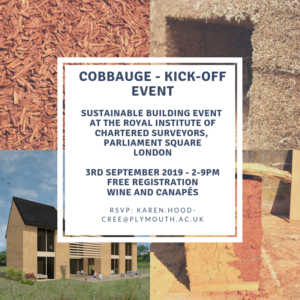

Cob Bauge Partners Logos
CobBauge Phase 2 Launch Agenda
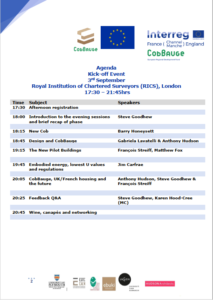
Cobbauge Phase 2 Agenda 2 Evening

Cobbauge Phase 2 Agenda 1 Afternoon

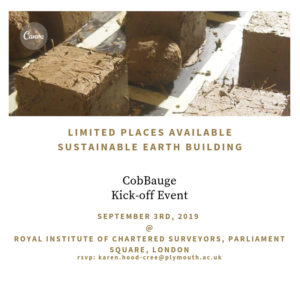

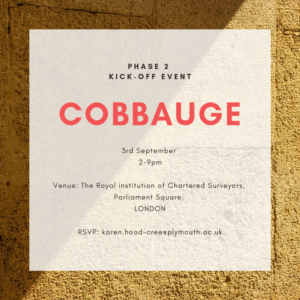

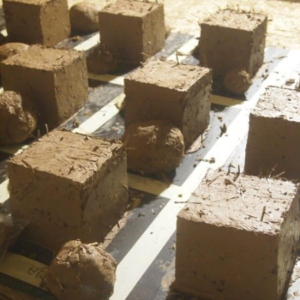
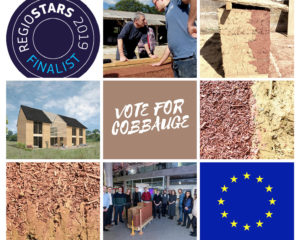

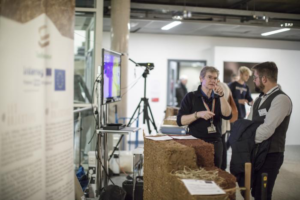

17 Images:
CPD:
CPD Handouts:
Other’s CPD:
Lectures:
Lectures Covers:
Lectures Slides:
Lectures Shows:
Lectures Handouts:
Other’s Lectures:
Icons:
Logos:
Pinterest:
Videos:
Labels:
Green Labels:
Technical Labels:
Health Labels:
Water Labels:
If you wish to reproduce images, feel free, but please acknowledge the source.
© GBE GBC GBL NGS ASWS Brian Murphy aka BrianSpecMan **
16th December 2012 – 26th October 2022
See Also:
GBE Checklist
- Trade/Work Section
- Trade/Work section
- Trade/Work section:
GBE Jargon Buster
- Term
- Term
- Term
GBE CPD
- Seminar
GBE Links
- Organisation/Website
GBE Manufacturers
GBE Products
GBE Materials
GBE Systems
GBE Elemental Assemblies
GBE Calculator
- Calculators (Navigation) G#600 N#621
- Product
GBE CAD
- CAD (Navigation) G#702 N#724
- 2D and 3D SketchUp Product files
- SketchUp files of Construction Sections
GBS Green Building Specification
- Green Building Specification (About) G#450 N#456
GBS Robust Specification
- Robust Specification Work Section (Navigation) G#460 N#466
- Robust Specification Clause
- Robust Specification Work Section
GBE Product Information
GBE Projects
Projects: Building (Case Studies) (Navigation) G#521 N#541
Projects: Information (Case Studies) (Navigation) G#751 N#773
Projects: Events (Case Studies) (Navigation) G#752 N#774
Projects: Index (Navigation) N#548
GBE Checklist Template
© GBE GBC GBL NGS ASWS Brian Murphy aka BrianSpecMan **
16th December 2012 – 26th October 2022


